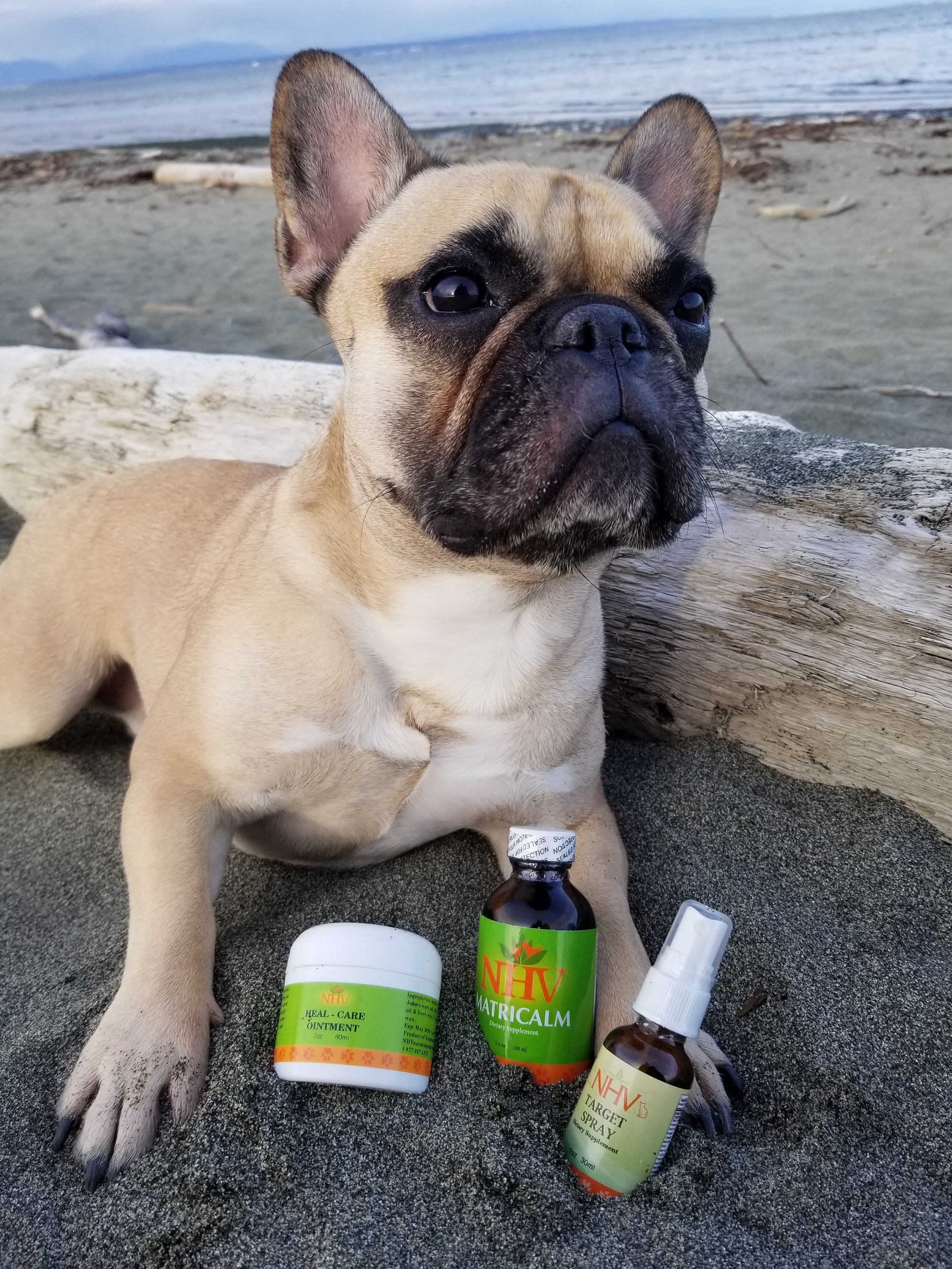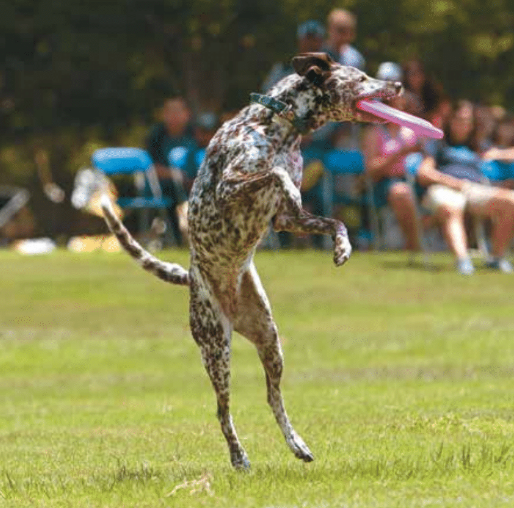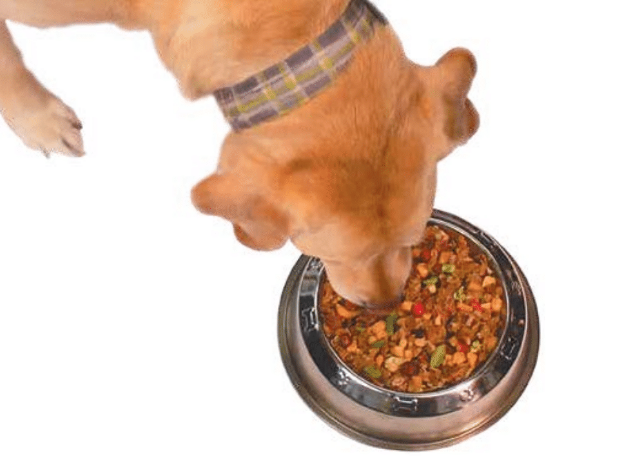Call of the Wild with Raw, Frozen, Dehydrated Food
Pet Age Staff //September 27, 2017//
BY ERIC STENSON
The raw, frozen and dehydrated segments of the pet food market are still relatively small, but they are growing steadily, according to PetFoodIndustry.com. Frozen sales have been rising about 27 percent per year, representing about $97 million or 1.2 percent of the pet specialty market. More pet retailers are carrying frozen, increasing from 38 percent in 2011 to 63 percent by 2016, while dehydrated pet foods account for approximately $24 million in sales.
Located in Pleasant Prairie, Wisconsin, Tucker’s Raw Frozen and Treats got started in 2009 with frozen animal bones for dogs.
A new spin that Tucker’s recently introduced is its dehydrated beef bones, which are made in the USA. The company describes the bones, which still have the marrow inside, as being long-lasting chews that are as strong as raw bones but without the mess. Available in an 11.5-ounce package, the bones come in a variety of sizes.
Tucker’s originally developed raw diets for zoos and then branched out to the retail market, according to Jeff Kalish, Tucker’s founder and owner.
“People were grinding food for their own pets, and we saw amazing results from raw food,” he said. “Dogs are true carnivores; it’s in their DNA.”
No ‘Ick’ Factor
Matt Scheil, Tucker’s vice president for sales, explains that raw is the diet that most closely emulates what dogs would encounter in the wild.
“It’s the most biologically appropriate for dogs,” he said. “The carnivore diet as opposed to a kibble.”
The frozen format also makes storage, preparation and serving easy, Scheil continued.
“They are individual portions in individual, vacuum-sealed packets,” he said. “Just thaw in the fridge and put it in a dish.”
As far as varieties, Tucker’s has been doing a lot with pork as an alternative protein, making versions with pork, beef and pumpkin; pork, bison and pumpkin; and pork, lamb and pumpkin. The company also produces beef and pumpkin, turkey and pumpkin, and salmon and pumpkin formulas.
“We developed our pork formulations with three zoological nutritionists, with pork as a nutritional alternative to beef,” Scheil said. “We wanted to give people additional options.”
All formulas are 95 percent meat, bone and organ and then 5 percent fiber (pumpkin).
“The pumpkin helps keep the digestive tract moving,” Scheil explained. “It helps when people want to transition among proteins.”
Another way Tucker’s works to make raw feeding easier is to reassure consumers that the company’s formulations are nutritionally complete, taking the guesswork out of the proposition for people who might want to make raw diets at home. Tucker’s also works to make it a more pleasant experience for pet owners.
“We try to take the ‘ick’ factor out of raw,” Scheil said. “For example, for organs, we use heart instead of liver to eliminate that off-putting smell. We also emulsify the food into a pate instead of grinding it.”
Scheil also reminds retailers that raw/frozen offers them a “safety net” against competition from online retailers who would have a much harder time delivering products.
“It drives foot traffic to your store,” he said. “A 6-pound bag of 8-ounce patties might last a week, as opposed to a big bag of kibble.”
Nutritional Needs
Cloudstar’s Wellmade line, produced by Whitebridge Pet Brands of St. Louis, Missouri, uses dehydrated food to create an easy “do-it-yourself” approach, according to Ann Hudson, marketing manager. Wellmade has four dehydrated varieties—chicken and vegetable, beef and vegetable, pork and vegetable, and garden vegetable—
that are designed so pet owners can add warm water, mix and serve.
“Pet owners can add fresh meat if they want, but each mix is complete and balanced as prepared, so it isn’t necessary,” Hudson explained. “Th e air-dried meats will rehydrate during preparation, releasing some of the flavors and textures of fresh meat.”
Cloudstar is fairly new to the area of dehydrated products, releasing its Wellmade line in December 2016. All of its mixes were formulated by food scientists and nutritionists, according to Hudson, and each mix was measured for palatability and digestibility to ensure product quality and performance.
“Alternative formats, like dehydrated and air-dried, are one of the fastest-growing segments in pet food and treats,” she noted. “Specialty retailers, in particular, are poised for success because these diets may need more explanation, and no one can educate new pet owners better than a pet specialty retailer can.”
Primal Pet Foods in San Francisco was founded in 2001, and it produces beef, chicken, duck, venison, turkey, rabbit, pheasant, lamb and combination formulas for dogs and cats. 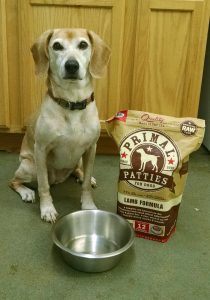
“The formulas are species appropriate and geared toward carnivorous animals,” said Matt Koss, Primal’s founder. “With omega 3 and omega 6, the digestibility factor is much higher than in a cooked formula. Our food has active enzymatic properties, which are needed in the gut. Cooking kills off these enzymes.”
Primal’s formulas recognize the differences in the nutritional needs of cats and dogs, Koss said.
“Cats are obligate carnivores and require significant amounts of water from their food. Their formulas are higher in meat protein and have a taurine supplement to provide thiamine,” Koss explained. “Dogs are more omnivorous. As hunters, they would eat remains. It would be a high meat content but would have vegetative content—it would mimic the stomach of prey.”
Koss suggests a gradual approach in transitioning pets to raw feeding, starting with 75 percent of their old food for the first few days, 25 percent of raw, and eventually going to full raw by day six.
Regarding interaction with retailers, Koss suggests that they position themselves as subject-matter experts and problem solvers.
“Consumers seek out alternative products and local retailers that carry multiple brands,” he said. “Stand behind and educate your staff . Th at will bring success. You will build loyalty fast if you can solve problems.”
Dr. B’s Longevity Raw Pet Food in Little Falls, New Jersey, makes frozen raw diets for dogs in beef, chicken, turkey, duck and rabbit varieties, and is developing a menu for cats, according to Nancy Peplinsky, managing director. Th e formulations were developed initially by Dr. Gerald Buchoff , a holistic veterinarian. He has been creating foods for patients for about 10 years, but Dr. B’s was launched as a brand for retail sale just last year, Peplinsky explained.
“Dr. B was tired of seeing cancers, skin and joint disorders, allergies and auto-immune disorders,” Peplinsky said. “It’s all about the health benefits—leaving the vitamins, minerals and probiotics intact.”
Dr. B’s products include green tripe as a source of lycopene and mushrooms for immune support. The cat formulas are being taste-tested now and are expected to be released later in the summer.
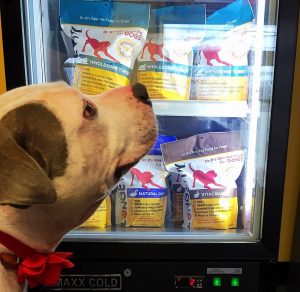 “The dietary needs are very different; they are true carnivores,” Peplinsky said. “They’re also very picky. For example, the green tripe inclusion quantity is a fine line.”
“The dietary needs are very different; they are true carnivores,” Peplinsky said. “They’re also very picky. For example, the green tripe inclusion quantity is a fine line.”
Dr. B’s dog foods are available in packages of individual 4-ounce patties and in 2-pound and 5-pound bulk
bags. The plan for cats is for “slider-size” patties, but they are not sure yet about whether they would go with bulk packs for felines, Peplinsky said.
From a retailer perspective, Gordon Kriebel, owner of Perk Valley Pet Eatery in Trappe, Pennsylvania, says he has found an increasing awareness and acceptance of raw/frozen diets among consumers.
“It’s founded on function—it’s a species-appropriate diet,” he said. “Th e overall education toward raw food is growing. Th at segment of our business sales is growing tremendously, faster than any other segment in our store.”
Kriebel said that some customers use freeze-dried products as a “gateway” into raw food, but that many “make the leap right into frozen.” Brands his store carries include Primal, Nature’s Varieties, Stella and Chewy’s, Steve’s and Rad Cat.
He added that raw foods often make an excellent substitute for prescription processed foods.
“[Prescription food] massages a problem instead of fixing it,” he said. “Animals can thrive on [raw food] instead of just doing OK.”






